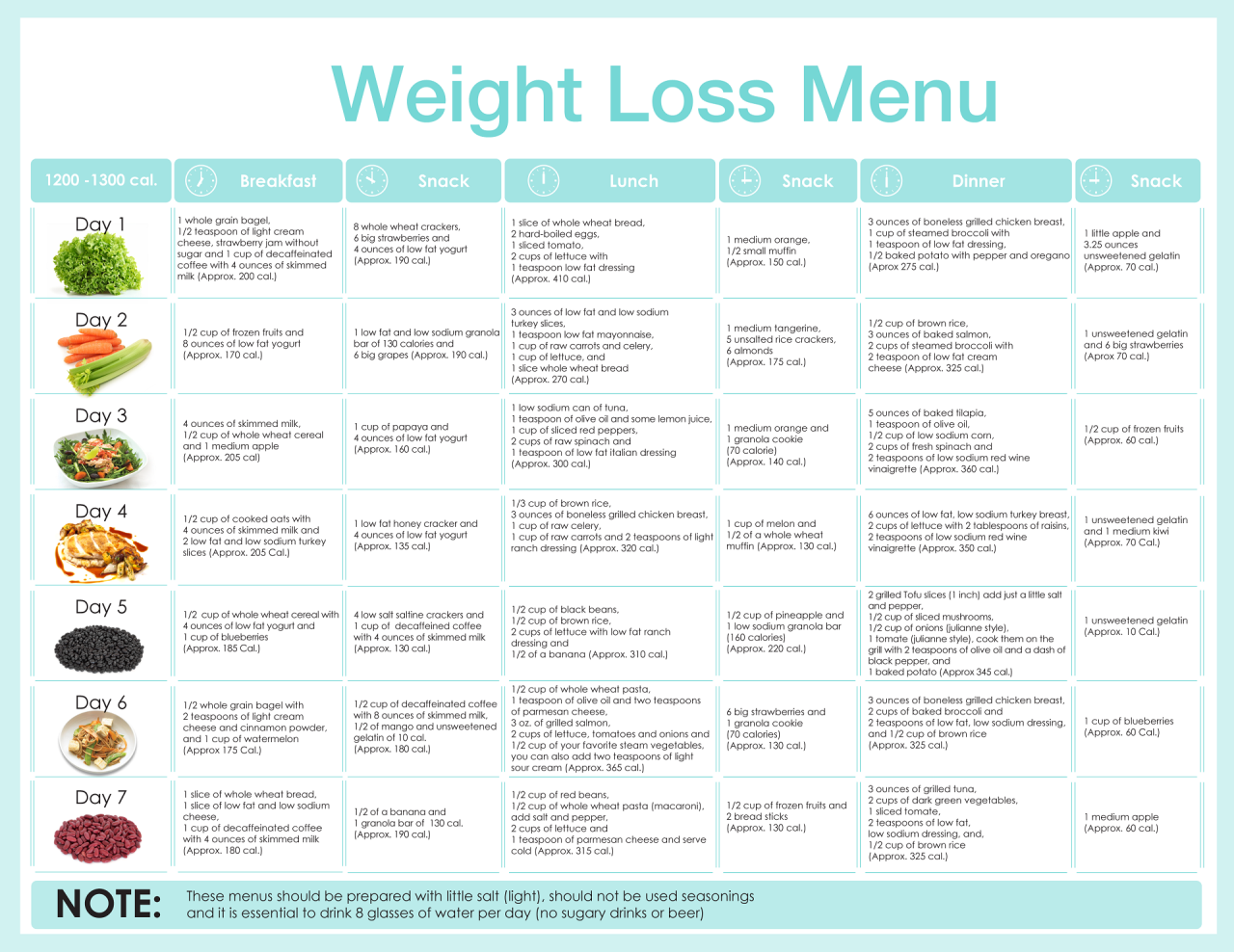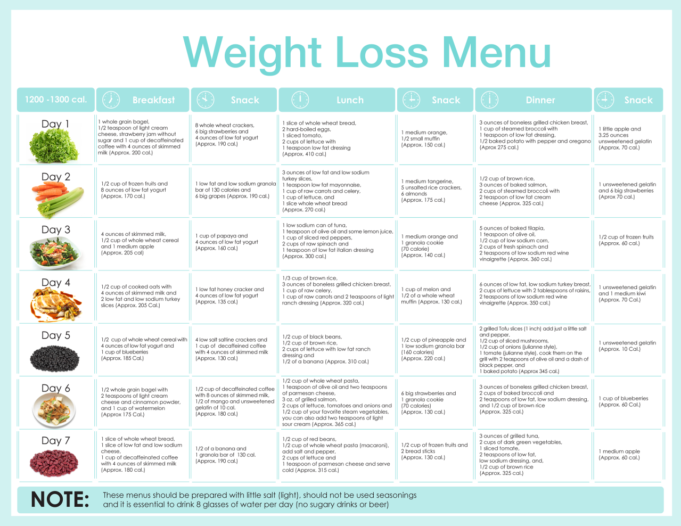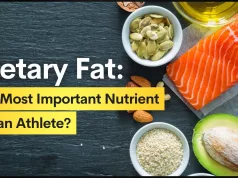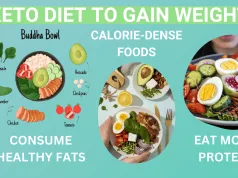Free diet plan for weight loss – the phrase itself is like a siren song, promising a slimmer figure without breaking the bank. But before you dive headfirst into the sea of online meal plans, let’s take a moment to navigate the currents of reality.
These free plans can be a great starting point, but like a free sample of cheese, they often come with a catch.
Some might be too restrictive, leaving you feeling deprived and craving a pizza-fueled rebellion. Others could be so vague that you’re left wondering what to eat for breakfast, lunch, and dinner. And then there are the plans that are downright dangerous, promoting fad diets and unsustainable practices that can harm your health.
But fear not, dear reader, for this guide will equip you with the knowledge to navigate the treacherous waters of free diet plans and emerge victorious, ready to conquer your weight loss goals with a healthy dose of humor and common sense.
Understanding Free Diet Plans
The internet is overflowing with free diet plans, promising rapid weight loss and a healthier lifestyle. But before you dive headfirst into the digital buffet of diet advice, it’s crucial to understand what you’re getting into. Free diet plans come in all shapes and sizes, each with its own set of advantages and drawbacks.
Types of Free Diet Plans
The online world offers a diverse range of free diet plans, each with its own unique approach to weight loss. Here’s a glimpse into some of the most common types:
- Calorie-Counting Plans:These plans focus on tracking your daily calorie intake and ensuring you consume fewer calories than you burn. Examples include MyFitnessPal and LoseIt!
- Macro-Focused Plans:These plans emphasize the balance of macronutrients like carbohydrates, proteins, and fats in your diet. The popular ketogenic diet and the Mediterranean diet fall under this category.
- Intermittent Fasting Plans:These plans involve cycling between periods of eating and fasting, restricting food intake for specific time windows. The 16/8 method and the 5:2 diet are popular examples.
- Specific Food Group Plans:These plans eliminate or restrict certain food groups, such as the paleo diet, which excludes grains, legumes, and dairy products.
- Lifestyle Plans:These plans focus on holistic changes to your lifestyle, including exercise, stress management, and mindful eating.
Benefits of Free Diet Plans
While free diet plans might seem too good to be true, they offer several advantages:
- Accessibility:Free diet plans are readily available online, eliminating the need for expensive consultations or subscriptions.
- Variety:You have access to a wide array of diet plans catering to different needs and preferences.
- Convenience:Free diet plans can be accessed anytime, anywhere, allowing you to manage your diet on your own terms.
- Inspiration:Free diet plans can provide motivation and inspiration to embark on your weight loss journey.
Drawbacks of Free Diet Plans
While free diet plans offer convenience and accessibility, they also come with potential drawbacks:
- Lack of Personalization:Free diet plans are often generic and may not be tailored to your individual needs, health conditions, or preferences.
- Unreliable Information:The internet is a vast ocean of information, and not all free diet plans are created equal. Some may contain misleading or inaccurate information, potentially leading to unhealthy practices.
- Limited Support:Free diet plans usually lack personalized guidance and support from qualified professionals, which can be crucial for long-term success.
- Sustainability:Free diet plans often focus on quick fixes rather than sustainable lifestyle changes, which can lead to weight regain after the initial phase.
Reputable Sources for Free Diet Plans
If you’re considering using a free diet plan, it’s essential to choose a reputable source. Here are some trusted organizations and websites:
- The National Institutes of Health (NIH):The NIH provides evidence-based information on diet and weight loss, including free resources like the Dietary Guidelines for Americans.
- The Academy of Nutrition and Dietetics:This professional organization offers reliable information and resources on nutrition and healthy eating, including free guides and articles.
- The American Heart Association:The AHA provides evidence-based guidelines on heart-healthy diets, including free resources like recipes and meal plans.
- Registered Dietitians:Many registered dietitians offer free resources and information on their websites or social media platforms.
Key Components of a Healthy Diet Plan
A healthy diet plan is the cornerstone of weight loss, and it’s not just about restricting calories; it’s about nourishing your body with the right nutrients. This means focusing on a variety of foods from all food groups in appropriate portions.
Sample Meal Plan
A balanced meal plan should include all essential food groups: fruits, vegetables, grains, protein, and dairy. Here’s a sample meal plan to illustrate this:
Breakfast
- Oatmeal with berries and nuts: This provides complex carbohydrates for sustained energy, fiber for digestion, and healthy fats from nuts.
- Greek yogurt with fruit and granola: A great source of protein, calcium, and healthy carbohydrates.
- Eggs with whole-wheat toast: A classic breakfast option rich in protein and essential nutrients.
Lunch
- Tuna salad sandwich on whole-wheat bread: A good source of protein and healthy fats, with whole grains for fiber.
- Chicken breast salad with mixed greens: A light and refreshing lunch option with lean protein and fiber.
- Lentil soup with a side salad: A hearty and nutritious lunch option packed with protein, fiber, and vitamins.
Dinner
- Salmon with roasted vegetables: A delicious and healthy dinner option rich in omega-3 fatty acids and antioxidants.
- Chicken stir-fry with brown rice: A flavorful and nutritious dinner option with lean protein, complex carbohydrates, and vegetables.
- Vegetarian chili with cornbread: A hearty and satisfying dinner option with plenty of fiber and plant-based protein.
Snacks
- Fruit: A natural source of vitamins, minerals, and fiber.
- Vegetables: Low in calories and packed with nutrients.
- Trail mix: A convenient and nutritious snack option with a mix of nuts, seeds, and dried fruit.
- Yogurt: A good source of protein and calcium.
Portion Control and Calorie Intake
Portion control is crucial for weight loss. While a healthy diet is essential, consuming too much of even healthy foods can lead to weight gain. The key is to eat in moderation and be mindful of your calorie intake.
A general guideline for weight loss is to consume fewer calories than you burn.
For example, if you need 2,000 calories per day, aim to consume 1,500-1,800 calories. This deficit will help you lose weight gradually and sustainably.
Incorporating Healthy Snacks and Hydration
Healthy snacks are essential for keeping your energy levels up throughout the day and preventing overeating at mealtimes.
Tips for Healthy Snacking
- Choose nutrient-rich snacks like fruits, vegetables, nuts, and yogurt.
- Avoid processed snacks that are high in sugar, fat, and calories.
- Plan your snacks ahead of time to avoid impulsive choices.
Hydration is also crucial for weight loss. Water helps you feel full, boosts your metabolism, and flushes out toxins.
Tips for Staying Hydrated
- Drink water throughout the day, even when you’re not thirsty.
- Carry a reusable water bottle with you and refill it regularly.
- Choose water over sugary drinks like soda and juice.
Incorporating Exercise: Free Diet Plan For Weight Loss
You’ve already made a fantastic start by focusing on your diet. Now, let’s add some movement to the mix! Exercise isn’t just about burning calories; it’s about strengthening your body, boosting your mood, and improving your overall health. Think of it as an investment in your well-being that pays off in spades.
Beginner-Friendly Exercises
We’re not talking about marathon training here! These are simple, easy-to-do exercises that anyone can incorporate into their routine.
- Walking:This is the most accessible exercise, requiring nothing more than a pair of comfortable shoes. Aim for 30 minutes of brisk walking most days of the week.
- Swimming:A great low-impact workout that’s easy on your joints. Plus, it’s a lot of fun!
- Cycling:Get outdoors and enjoy the scenery while getting a great cardio workout. Start with shorter rides and gradually increase the distance.
- Yoga:This ancient practice combines physical postures with deep breathing, promoting flexibility, strength, and stress relief.
- Bodyweight Exercises:You don’t need fancy equipment for these. Squats, push-ups, lunges, and planks can be done anywhere, anytime.
Sample Workout Routine
Here’s a simple workout routine that can be easily integrated into your week. Remember, it’s best to consult your doctor before starting any new exercise program.
| Day | Workout | Duration |
|---|---|---|
| Monday | 30 minutes of brisk walking | 30 minutes |
| Tuesday | Yoga or bodyweight exercises (squats, push-ups, lunges, planks) | 30 minutes |
| Wednesday | Rest | – |
| Thursday | 30 minutes of brisk walking | 30 minutes |
| Friday | Swimming or cycling | 30 minutes |
| Saturday | Rest or light activity (like a leisurely walk) | – |
| Sunday | Yoga or bodyweight exercises | 30 minutes |
Remember, consistency is key! Start small and gradually increase the intensity and duration of your workouts. Listen to your body, and don’t be afraid to take rest days when needed. And most importantly, have fun!
Sustainable Weight Loss Strategies
Dieting is a marathon, not a sprint. The key to successful weight loss is making sustainable changes to your lifestyle, not just focusing on a quick fix. This means focusing on gradual changes that you can maintain over the long term, rather than drastic measures that are difficult to stick with.
Think of it as building a healthier you, one delicious, fulfilling step at a time.
Looking for a free diet plan to shed those extra pounds? Don’t worry, you don’t have to give up all the things you love! You can still enjoy a refreshing diet ginger ale while you’re working towards your weight loss goals.
Just be sure to keep it in moderation and focus on making healthy choices the majority of the time. After all, a little indulgence can be part of a balanced and sustainable plan.
Gradual Lifestyle Changes
Making small, manageable changes to your eating habits and exercise routine is much more effective than trying to overhaul your entire lifestyle overnight. These gradual changes are easier to incorporate into your daily life and are more likely to become long-term habits.
- Start with small changes:Instead of eliminating entire food groups, start by reducing your portion sizes or swapping out unhealthy snacks for healthier options. For example, try swapping your sugary soda for water infused with fruit or herbs.
- Incorporate more physical activity:Start with short walks, then gradually increase the duration and intensity of your workouts. You can also find fun activities you enjoy, like dancing, swimming, or hiking.
- Be patient and consistent:Remember, sustainable weight loss takes time and effort. Don’t get discouraged if you don’t see results immediately. Just keep at it and you’ll eventually reach your goals.
Overcoming Common Challenges
Weight loss is a journey, and it’s normal to encounter bumps along the way. Here are some common challenges and tips to overcome them:
- Cravings:Cravings are a natural part of life. Instead of giving in, try to distract yourself with a healthy activity or drink a glass of water. If you do give in, don’t beat yourself up about it. Just get back on track with your next meal.
- Social pressure:It can be tough to resist unhealthy food choices when you’re surrounded by temptation. Try to find healthier alternatives at social gatherings or bring your own food.
- Lack of motivation:It’s easy to lose motivation when you don’t see immediate results. Set realistic goals and celebrate your progress along the way. Find a workout buddy or join a support group for extra motivation.
Mindset and Motivation
Your mindset plays a crucial role in your weight loss journey. A positive and supportive mindset can help you stay motivated and overcome challenges. Here are some tips for cultivating a positive mindset:
- Focus on the benefits:Think about the positive changes you’ll experience, such as increased energy, improved mood, and better overall health.
- Celebrate your successes:Acknowledge your progress, no matter how small. This will help you stay motivated and build confidence.
- Practice self-compassion:Be kind to yourself, even when you make mistakes. Everyone makes mistakes. Just learn from them and move on.
Importance of Consulting Professionals

You’ve decided to embark on a weight loss journey, armed with a free diet plan you found online. While it’s great to be proactive about your health, remember that every body is different, and what works for one person might not work for another.
This is where consulting a professional comes in.
Looking for a free diet plan to shed those extra pounds? Remember, weight loss isn’t a one-size-fits-all solution, and if you’re dealing with diabetes, it’s crucial to follow a specialized plan. Check out this article on the best diet for diabetics to get a head start on managing your blood sugar levels while also working towards your weight loss goals.
Once you’ve got the basics down, there are plenty of free resources online to help you create a customized plan that fits your lifestyle and dietary needs.
Benefits of Professional Guidance
Seeking advice from a registered dietitian or nutritionist offers numerous benefits that can significantly impact your weight loss journey.
- Personalized Plan:A professional can create a diet plan tailored to your individual needs, considering factors like your medical history, allergies, preferences, and lifestyle. This ensures the plan is safe, effective, and sustainable for you.
- Scientifically Sound:Registered dietitians are trained in nutrition science and can guide you towards evidence-based dietary choices. They can help you navigate the overwhelming amount of information available and make informed decisions.
- Accountability and Support:Having a professional to check in with regularly can provide accountability and support throughout your weight loss journey. They can help you stay motivated, address any challenges, and make adjustments as needed.
- Prevention of Deficiencies:A professional can help ensure your diet provides all the essential nutrients your body needs, preventing potential deficiencies that can arise from restrictive diets.
- Healthy Habits:Beyond just weight loss, a dietitian can help you develop healthy eating habits that can benefit you for the long term.
Risks of Unprofessional Guidance, Free diet plan for weight loss
While free diet plans might seem appealing, relying solely on them can come with potential risks.
Looking for a free diet plan to shed those extra pounds? Well, buckle up, buttercup, because the internet is overflowing with options! One popular choice is the keto diet, which focuses on high fat, moderate protein, and low carbs.
If you’re intrigued by this fat-burning frenzy, check out this guide on how to do the keto diet and see if it’s the right fit for you. Remember, finding the right diet plan is a journey, not a sprint, so be patient and choose a plan that suits your lifestyle and goals.
- Nutrient Deficiencies:Free diet plans often focus on calorie restriction without considering the nutritional needs of the individual. This can lead to deficiencies in essential vitamins and minerals, impacting your overall health.
- Unsustainable Practices:Many free plans promote restrictive or fad diets that are difficult to maintain long-term. This can lead to yo-yo dieting, where you lose weight quickly only to gain it back.
- Health Complications:Following an improper diet plan without professional supervision can potentially lead to health complications, especially for individuals with pre-existing medical conditions.
- Unrealistic Expectations:Free plans often promise unrealistic results, setting you up for disappointment and frustration.
Resources for Finding Professionals
Finding a qualified dietitian or nutritionist is easier than you think.
- Academy of Nutrition and Dietetics:The Academy of Nutrition and Dietetics (AND) offers a searchable database of registered dietitians in your area.
- Local Hospitals and Clinics:Many hospitals and clinics have dietitians on staff who can provide individual consultations.
- Online Resources:Websites like the AND website and the National Association of Nutrition Professionals (NASP) can help you locate qualified professionals in your area.
Conclusion
So, while free diet plans can be a useful tool, remember that they’re just the beginning. Like a trusty map, they can guide you, but they can’t do the walking for you. The real magic happens when you embrace the journey, learning about your body, making sustainable changes, and enjoying the process.
After all, weight loss is not a race to the finish line, but a marathon of self-discovery and empowerment. So, buckle up, grab a healthy snack, and let’s embark on this adventure together!
Question Bank
Is it safe to follow a free diet plan without consulting a doctor?
While many free diet plans are safe, it’s always a good idea to consult with a doctor or registered dietitian, especially if you have underlying health conditions or are taking medications. They can help you tailor a plan that meets your individual needs.
How can I tell if a free diet plan is legitimate?
Look for plans that are based on scientific evidence, emphasize whole foods, and avoid restrictive or unrealistic claims. Reputable sources include government websites, academic institutions, and registered dietitians.
What are some common mistakes people make when using free diet plans?
Common mistakes include following plans that are too restrictive, not considering individual needs and preferences, and not incorporating exercise into the plan.
























